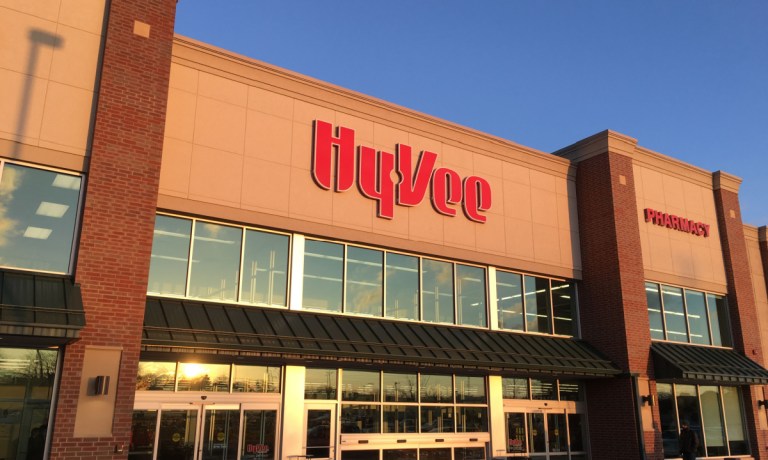
With some grocers scaling up their in-house fulfillment infrastructure and others pulling back, Hy-Vee is tapping automated warehouses to meet digital demand.
Grocery fulfillment solutions provider Takeoff Technologies announced Thursday (Oct. 12) its partnership with the Midwestern grocery chain, which has 550 locations across eight states, to boost the merchant’s direct order fulfillment efficiency, enabling it to offer more “time slots and availability” to eGrocery customers.
“A network of Micro Fulfillment Centers powered by Takeoff’s technology will help create new competitive advantages for Hy-Vee and enhanced online services for Hy-Vee customers,” Jose Aguerrevere, Takeoff’s CEO and co-founder, said in a statement.
Yet as Hy-Vee steps up its in-house eCommerce fulfillment capabilities, other grocers are scaling back. For instance, Ahold Delhaize subsidiary Giant Food has been shuttering its fulfillment centers, and U.S. supermarket giant Kroger recently slowed and then paused the expansion of its automated delivery facilities created in partnership with grocery technology company Ocado.
“Right now, all the energy is focused on the [automated fulfillment centers] we have and making sure that those are where we want them to be, where they need to be and on a sustainable basis,” Kroger Chairman and CEO Rodney McMullen told analysts on the grocer’s earnings call last month. “… A ton of work is being done. We’re making progress, but we wouldn’t be to the point where we would start focusing on additional sheds until we make sure that we have a clear path on the ones we have.”
At the same time, third-party grocery delivery options are expanding. Last month, Instacart raised hundreds of millions in its initial public offering (IPO), and in recent weeks, restaurant aggregators have been looking to gain share from Instacart, adding new grocery merchants to their platforms and advertising these offerings more pointedly to consumers. Most recently, DoorDash announced Thursday the addition of The Fresh Market stores to its platform, adding 161 more grocery sites.
In an interview with PYMNTS, Tamara Pattison, senior vice president and chief digital officer at grocer The Save Mart Companies, which has about 200 locations across three banners, argued that consumers are demanding third-party availability.
“[We’re] looking at [our] footprint and understanding where there is some level of penetration [with] existing marketplaces. Making sure that our shoppers see us participating in those marketplaces is critical,” Pattison said. “We want to make sure that we’re not dictating to our shoppers how to engage with us, but that we are looking at their behavior and finding ways to ensure that we can meet them wherever they want us to be.”
Overall, a significant share of consumers are engaging with grocers via digital channels. PYMNTS’ study “Consumer Interest in an Everyday App” noted that 14% of respondents said that, in the previous 30 days, they had exclusively purchased groceries using internet-connected devices. Plus, an additional 39% purchased groceries both by using connected devices and via more traditional means. The study was conducted in collaboration with PayPal, and was based on a survey of more than 2,200 U.S. consumers.
Additionally, many consumers expect to step up their eGrocery engagement in the near future. PYMNTS Intelligence’s study “Tracking the Digital Payments Takeover: Catching the Coming eCommerce Wave,” created in collaboration with Amazon Web Services, found that about one in three shoppers is very or extremely likely to increase their online grocery purchases in the next year. The study drew from a census-balanced survey of nearly 2,700 U.S. consumers.